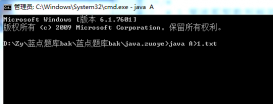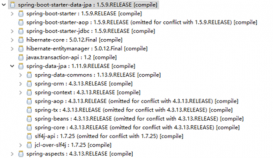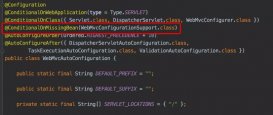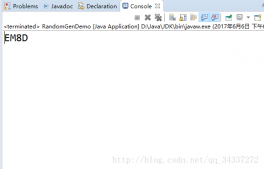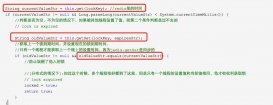Spring Cache设置缓存条件
原理
从Spring3.1开始,Spring框架提供了对Cache的支持,提供了一个对缓存使用的抽象,通过在既有代码中添加少量它定义的各种 annotation,即能够达到缓存方法的返回对象的作用。
提供的主要注解有@Cacheable、@CachePut、@CacheEvict和@Caching,具体见下表:
| 注解 | 说明 |
|---|---|
| @Cacheable | 可以标注在类或方法上:标注在方法上表示该方法支持数据缓存;标在类上表示该类的所有方法都支持数据缓存。 具体功能:在执行方法体之前,检查缓存中是否有相同key值的缓存存在,如果存在对应的缓存,直接返回缓存中的值;如果不存在对应的缓存,则执行相应的方法体获取数据,并将数据存储到缓存中。 |
| @CachePut | 可以标注在类或方法上,表示支持数据缓存。 具体功能:在方法执行前不会检查缓存中是否存在相应的缓存,而是每次都会执行方法体,并将方法执行结果存储到缓存中,如果相应key值的缓存存在,则更新key对应的value值。 |
| @CacheEvict | 可以标注在类或方法上,用于清除相应key值的缓存。 |
| @Caching | 可以标注在类或方法上,它有三个属性cacheable、put、evict分别用于指定@Cacheable、@CachePut和@CacheEvict |
当需要在类上或方法上同时使用多个注解时,可以使用@Caching,如:
|
1
|
@Caching(cacheable=@Cacheable("User"), evict = {@CacheEvict("Member"), @CacheEvict(value = "Customer", allEntries = true)}) |
@Cacheable的常用属性及说明
如下表所示:
| @Cacheable属性 | 说明 |
|---|---|
| key | 表示缓存的名称,必须指定且至少要有一个值,比如:@Cacheable(value=“Dept”)或@Cacheable(value={“Dept”,“Depts”}) |
| condition | 表示是否需要缓存,默认为空,表示所有情况都会缓存。通过SpEL表达式来指定,若condition的值为true则会缓存,若为false则不会缓存,如@Cacheable(value=“Dept”,key="‘deptno_'+# deptno “,condition=”#deptno<=40") |
| value | 表示缓存的key,支持SpEL表达式,如@Cacheable(value=“Dept”,key="‘deptno_' +#deptno"),可以不指定值,如果不指定,则缺省按照方法的所有参数进行组合。除了上述使用方法参数作为key之外,Spring还提供了一个root对象用来生成key,使用方法如下表所示,其中"#root"可以省略。 |
Root对象
| Root对象 | 说明 |
|---|---|
| methodName | 当前方法名,比如#root.methodName |
| method | 当前方法,比如#root.method.name |
| target | 当前被调用的对象,比如#root.target |
| targetClass | 当前被调用的对象的class,比如#root.targetClass |
| args | 当前方法参数组成的数组,比如#root.args[0] |
| caches | 当前被调用的方法使用的缓存,比如#root.caches[0].name |
@CachePut的常用属性同@Cacheable
@CacheEvict的常用属性如下表所示:
| @CacheEvict属性 | 说明 |
|---|---|
| value | 表示要清除的缓存名 |
| key | 表示需要清除的缓存key值, |
| condition | 当condition的值为true时才清除缓存 |
| allEntries | 表示是否需要清除缓存中的所有元素。默认为false,表示不需要,当指定了allEntries为true时,将忽略指定的key。 |
| beforeInvocation | 清除操作默认是在方法成功执行之后触发的,即方法如果因为抛出异常而未能成功返回时不会触发清除操作。使用beforeInvocation可以改变触发清除操作的时间,当该属性值为true时,会在调用该方法之前清除缓存中的指定元素。 |
示例:设置当 dname 的长度大于3时才缓存
|
1
2
3
4
5
6
7
8
9
10
|
//条件缓存@ResponseBody@GetMapping("/getLocByDname")@Cacheable(cacheNames = "dept", key = "#dname", condition = "#dname.length()>3")public String getLocByDname(@RequestParam("dname") String dname) {//key动态参数 QueryWrapper<Dept> queryMapper = new QueryWrapper<>(); queryMapper.eq("dname", dname); Dept dept = deptService.getOne(queryMapper); return dept.getLoc();} |
示例:unless 即条件不成立时缓存
#result 代表返回值,意思是当返回码不等于 200 时不缓存,也就是等于 200 时才缓存。
|
1
2
3
4
5
6
7
8
9
10
11
12
|
@ResponseBody@GetMapping("/getDeptByDname")@Cacheable(cacheNames = "dept", key = "#dname", unless = "#result.code != 200")public Result<Dept> getDeptByDname(@RequestParam("dname") String dname){//key动态参数 QueryWrapper<Dept> queryMapper = new QueryWrapper<>(); queryMapper.eq("dname", dname); Dept dept = deptService.getOne(queryMapper); if (dept == null) return ResultUtil.error(120, "dept is null"); else return ResultUtil.success(dept);} |
Cache缓存配置
1、pom.xml
|
1
2
3
4
5
6
7
8
9
10
11
12
13
14
15
|
<dependency> <groupId>org.springframework.boot</groupId> <artifactId>spring-boot-starter-cache</artifactId></dependency><dependency> <groupId>org.springframework.boot</groupId> <artifactId>spring-boot-starter-aop</artifactId></dependency><!-- 反射工具类用于手动扫描指定包下的注解,根据defaultCache模块增加ehcache缓存域(非Spring Cache必须)--><!-- https://mvnrepository.com/artifact/org.reflections/reflections --><dependency> <groupId>org.reflections</groupId> <artifactId>reflections</artifactId> <version>0.9.11</version></dependency> |
2、Ehcache配置文件
|
1
2
3
4
5
6
7
8
9
10
11
12
13
14
15
16
17
18
19
20
21
22
23
24
25
26
27
28
29
30
|
<?xml version="1.0" encoding="UTF-8"?><ehcache xmlns:xsi="http://www.w3.org/2001/XMLSchema-instance" xsi:noNamespaceSchemaLocation="http://ehcache.org/ehcache.xsd" updateCheck="false"> <!-- 磁盘缓存位置 --> <diskStore path="java.io.tmpdir" /> <!-- name:缓存名称。 maxElementsInMemory:缓存最大个数。 eternal:对象是否永久有效,一但设置了,timeout将不起作用。 timeToIdleSeconds:设置对象在失效前的允许闲置时间(单位:秒)。仅当eternal=false对象不是永久有效时使用,可选属性,默认值是0,也就是可闲置时间无穷大。 timeToLiveSeconds:设置对象在失效前允许存活时间(单位:秒)。最大时间介于创建时间和失效时间之间。仅当eternal=false对象不是永久有效时使用,默认是0.,也就是对象存活时间无穷大。 overflowToDisk:当内存中对象数量达到maxElementsInMemory时,Ehcache将会对象写到磁盘中。 diskSpoolBufferSizeMB:这个参数设置DiskStore(磁盘缓存)的缓存区大小。默认是30MB。每个Cache都应该有自己的一个缓冲区。 maxElementsOnDisk:硬盘最大缓存个数。 diskPersistent:是否缓存虚拟机重启期数据 Whether the disk store persists between restarts of the Virtual Machine. The default value is false. diskExpiryThreadIntervalSeconds:磁盘失效线程运行时间间隔,默认是120秒。 memoryStoreEvictionPolicy:当达到maxElementsInMemory限制时,Ehcache将会根据指定的策略去清理内存。默认策略是LRU(最近最少使用)。你可以设置为FIFO(先进先出)或是LFU(较少使用)。 clearOnFlush:内存数量最大时是否清除。 --> <!-- 默认缓存 --> <defaultCache eternal="false" maxElementsInMemory="200000" overflowToDisk="false" diskPersistent="false" timeToIdleSeconds="0" timeToLiveSeconds="600" memoryStoreEvictionPolicy="LRU" /></ehcache> |
3、配置类
|
1
2
3
4
5
6
7
8
9
10
11
12
13
14
15
16
17
18
19
20
21
22
23
24
25
26
27
28
29
30
31
32
33
34
35
36
37
38
39
40
41
42
43
44
45
46
47
48
49
50
51
52
53
54
55
56
57
58
59
60
61
62
63
64
65
66
67
68
69
70
71
72
73
74
75
76
77
78
79
80
81
82
83
84
85
86
87
88
89
90
91
92
|
@Configuration@EnableCachingpublic class CustomConfiguration { /** * @see org.springframework.cache.interceptor.SimpleKeyGenerator * Generate a key based on the specified parameters. */ public static Object generateKey(Object... params) { if (params.length == 0) { return SimpleKey.EMPTY; } if (params.length == 1) { Object param = params[0]; if (param != null && !param.getClass().isArray()) { return param; } } return new SimpleKey(params); }/** * 若将target作为key的一部分时,CGLIB动态代理可能导致重复缓存 * 注意:返回的key一定要重写hashCode()和toString(),防止key对象不一致导致的缓存无法命中 * 例如:ehcache 底层存储net.sf.ehcache.store.chm.SelectableConcurrentHashMap#containsKey */ @Bean public KeyGenerator customKeyGenerator(){ return (target, method, params) -> { final Object key = generateKey(params); StringBuffer buffer = new StringBuffer(); buffer.append(method.getName()); buffer.append("::"); buffer.append(key.toString());// 注意一定要转为String,否则ehcache key对象可能不一样,导致缓存无法命中 return buffer.toString(); }; } /** * redis缓存管理器 */ @Bean @ConditionalOnBean(RedisConfiguration.class) @ConditionalOnProperty(prefix = "spring.cache", name = "type", havingValue = "redis", matchIfMissing = false) public CacheManager redisCacheManager(RedisConnectionFactory redisConnectionFactory) { RedisCacheConfiguration config = RedisCacheConfiguration.defaultCacheConfig() .serializeKeysWith(RedisSerializationContext.SerializationPair.fromSerializer(new StringRedisSerializer())) .serializeValuesWith(RedisSerializationContext.SerializationPair.fromSerializer(new GenericJackson2JsonRedisSerializer())) .entryTtl(Duration.ofMinutes(10)); return RedisCacheManager .builder(RedisCacheWriter.lockingRedisCacheWriter(redisConnectionFactory)) .cacheDefaults(config).build(); }/** * ehcache缓存管理器(默认) * default XML files {@link net.sf.ehcache.config.ConfigurationFactory#parseConfiguration()} */ @Bean @ConditionalOnProperty(prefix = "spring.cache", name = "type", havingValue = "ehcache", matchIfMissing = true) public CacheManager ehcacheCacheManager() { net.sf.ehcache.CacheManager cacheManager = net.sf.ehcache.CacheManager.create(); /** * 包扫描查找指定注解并将cacheNames添加到net.sf.ehcache.CacheManager(单例) */ Reflections reflections = new Reflections("com.example.demo.service", new TypeAnnotationsScanner() , new SubTypesScanner(), new MethodAnnotationsScanner()); Set<Class<?>> classesList = reflections.getTypesAnnotatedWith(CacheConfig.class); for (Class<?> aClass : classesList) { final CacheConfig config = AnnotationUtils.findAnnotation(aClass, CacheConfig.class); if (config.cacheNames() != null && config.cacheNames().length > 0) { for (String cacheName : config.cacheNames()) { cacheManager.addCacheIfAbsent(cacheName); } } } /** * 方法级别的注解 @Caching、@CacheEvict、@Cacheable、@CachePut,结合实际业务场景仅扫描@Cacheable即可 */ final Set<Method> methods = reflections.getMethodsAnnotatedWith(Cacheable.class); for (Method method : methods) { final Cacheable cacheable = AnnotationUtils.findAnnotation(method, Cacheable.class); if (cacheable.cacheNames() != null && cacheable.cacheNames().length > 0) { for (String cacheName : cacheable.cacheNames()) { cacheManager.addCacheIfAbsent(cacheName); } } } EhCacheCacheManager ehCacheCacheManager = new EhCacheCacheManager(); ehCacheCacheManager.setCacheManager(cacheManager); return ehCacheCacheManager; }} |
4、示例
|
1
2
3
4
5
6
7
8
9
10
11
12
|
@Component@CacheConfig(cacheNames = "XXXServiceImpl", keyGenerator = "customKeyGenerator")public class XXXServiceImpl extends ServiceImpl<XXXMapper, XXXEntity> implements XXXService { @CacheEvict(allEntries = true) public void evictAllEntries() {} @Override @Cacheable public List<XXXEntity> findById(Long id) { return this.baseMapper.selectList(new QueryWrapper<XXXEntity>().lambda() .eq(XXXEntity::getId, id)); }} |
以上为个人经验,希望能给大家一个参考,也希望大家多多支持服务器之家。
原文链接:https://hcshow.blog.csdn.net/article/details/119271227


